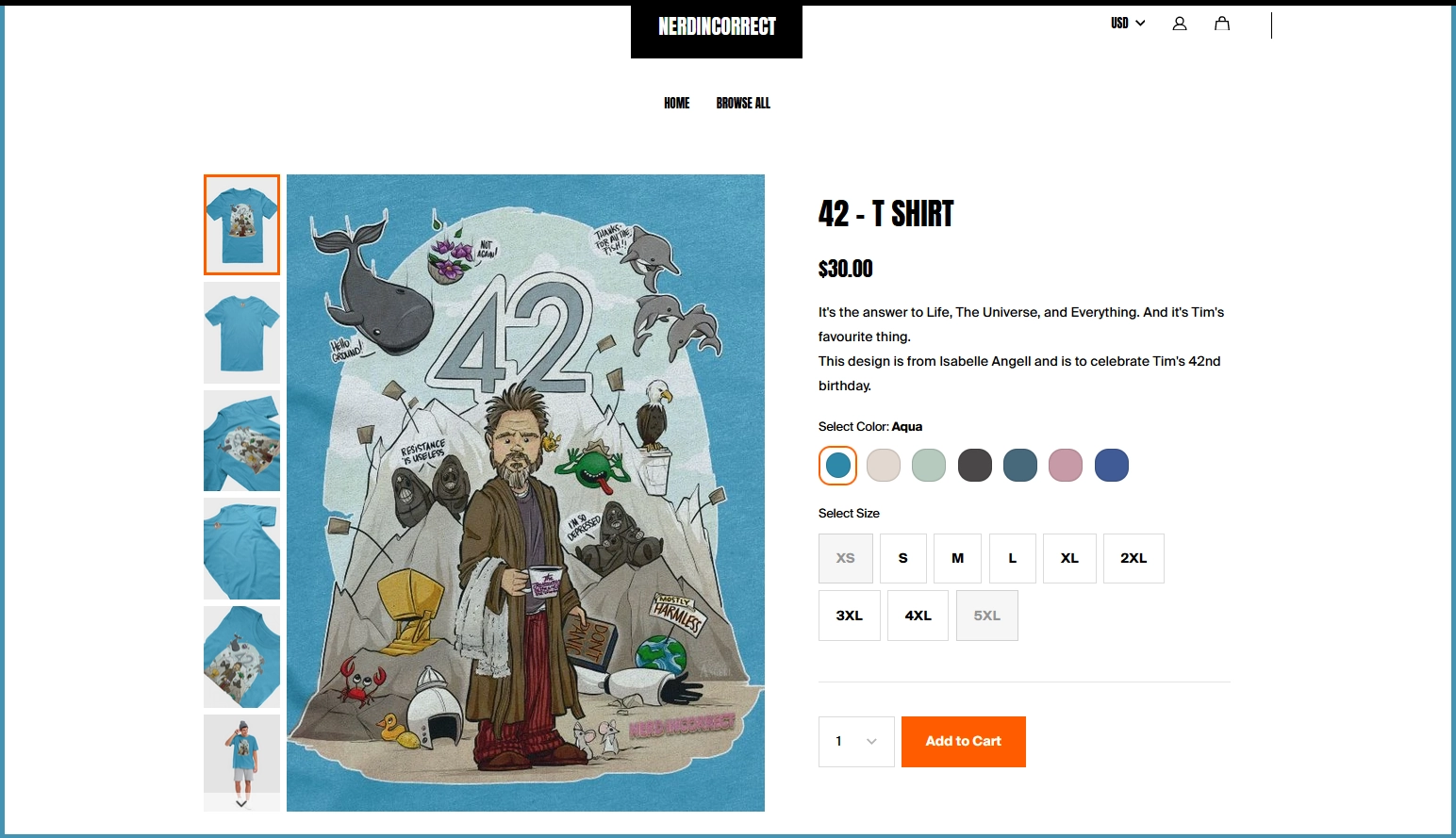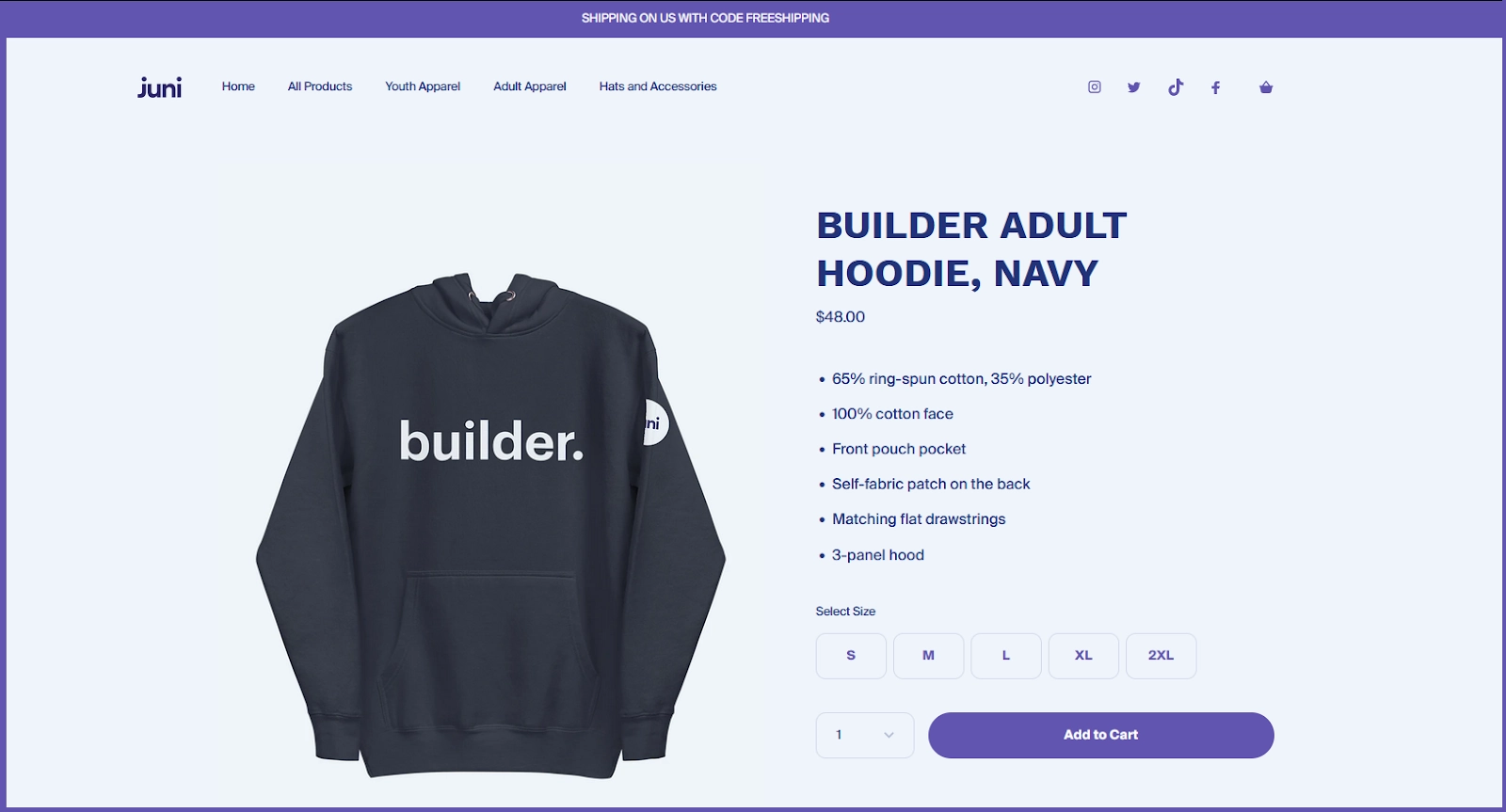DTG vs. DTF: Which Printing Method is the One For You?
.webp)
Been thinking about printing some amazing apparel and other merch featuring your own original designs? You might also want to give some thought to the printing process! In merchandise creation, two printing methods are frequently used: DTG (Direct to Garment) and DTF (Direct to Film.)
Each method has key differences, and can influence costs, production time, and the look and quality of the final product. Let's look into how both DTG and DTF printing work, and help you decide on the printing solution that suits you and your merch best.
What is DTG Printing and How Does it Work?
DTG printing, or Direct to Garment printing, is a versatile technique that involves applying ink directly onto the surface of a garment such as a T-shirt or hoodie. The DTG printer for fabric works much like your home inkjet desktop printer deposits ink onto a piece of paper. DTG printing utilizes specialized printers equipped with advanced technology to make those ink to fabric transfers, achieving intricate designs and rich colors.
The result of Direct to Garment printing is a high-quality, soft-touch print that seamlessly integrates with the fabric and is comfortable to wear. The DTG printing method is a popular way to create print on demand items one at a time; DTG printing can be used on mixed fabrics (tri-blends) and polyester, works extremely well on cotton fabric, and can even beautifully replicate photos on fabric.

And How Does DTF Printing Work?
Diving into DTF, or Direct To Film printing, is a method where designs are printed onto a special film with inks before being transferred onto the garment. DTF is a newer printing technique, kind of a combination of DTG printing and screen printing, and provides a versatile approach. DTF printing works by printing images onto a special film using a specific ink formula, then heat-transferring it onto the garment.
This results in a bright, elastic, and durable print with extra dimension, so DTF printing works for a range of fabrics and design styles, including polyester, nylon, cotton, and blends; it works best on thicker, heavyweight fabrics that can better support the film-type heat-transferred print.

DTG vs. DTF - The Key Differences
Costs
Understanding the financial aspects of the Direct to Garment printing and Direct to Film printing methods will help you make better decisions regarding your printing method of choice. Basically, Direct to Garment printing may involve slightly higher initial costs due to the specialized equipment and ink requirements, while Direct to Film printing, with its diverse applications and usage of less ink, may present a more budget-friendly option for creators looking to get the most bang for their buck.
Production Time
The choice between DTG printing and DTF printing can significantly impact production timelines. DTG printing takes the lead with its swift printing process for smaller orders, where quick turnarounds are imperative. But DTF printing might prove to be more time efficient for larger quantities, enabling creators to handle substantial orders without compromising on quality.
Quality
The choice between Direct to Garment printing and Direct to Film printing does directly influence the final product. DTG printing is excellent for designs with a lot of detail and rich, dark color depth, and offers a softer finish that absorbs into the fabric and really looks like it's part of the garment. DTF print work sits on top of the fabric, like a film or thin decal with a smooth texture, and are great for bright, vivid colors and chunky graphics.
DTG prints provide good results for all types of designs, where DTF printing works better with smaller designs, so that the print itself doesn't feel too thick or stiff upon wearing.
Color Vibrancy
Color vibrancy is the component that makes printed garments look rich and high-quality. DTG printing stands out for its ability to deliver those vivid, dynamic, blended colors, enhancing the visual appeal of your merch; the only thing it really doesn't do well with are designs with transparency.
DTF printing, with its unique printing process and “decal” look, offers a different yet equally appealing color experience, ensuring that creators can achieve their desired colors across a range of fabrics with either option. Both DTF and DTG printing use the CMYK (cyan, magenta, yellow, and black) ink color model to achieve an equally wide range of colors.
Print Durability
The durability of prints on garments is an important factor for creators aiming to provide long-lasting merchandise to their audience. Direct to Garment prints, especially on cotton, have good durability with proper washing and drying, although the colors can slowly fade over time. Direct to Film prints show good sturdiness across various fabrics, but the printed images, especially larger ones, can eventually crack without proper fabric care. Both DTF and DTG printing result in quality prints that look good and can be worn and enjoyed for a reasonable lifespan of the product.
Order Quantity
The scale of your projects also plays a role in deciding between DTG printing and DTF printing. If your focus lies in small batch or print-on-demand orders, perhaps for limited edition releases or special collections, DTG printing's efficiency, precision, and easier setup for the DTG printer equipment on the production end make it an ideal choice. If you'll be catering more to larger audiences, DTF's capability to handle bigger bulk orders can streamline your production process.
Sustainability
Sustainability is a growing concern, so it makes sense for creators to be mindful of the environmental impact of their choices. DTG printing, functioning like a giant inkjet printer and utilizing water-based inks as its main ingredient, is considered more eco-friendly, reducing the risk of harmful chemicals going out into the environment.
DTF's transfer printing does have some environmental concerns, as the heat transfer film used for DTF can contain chemicals/materials that can be harmful to the environment; so you might want to check if the company you're using can confirm that they dispose of those leftover materials properly and safely.
Which Printing Method is the One for You?
Choosing between DTG printing and DTF printing hinges on several factors. Consider the fabric you intend to print on, your color preferences, design intricacy, and the scale of your projects.
If your priorities are rich and vibrant colors, intricate, detailed designs, and softer prints that blend more into the fabric, DTG printing may be your go-to. If you're looking for cost-effectiveness for larger quantities and bright, smaller-scale designs, then DTF might be your ideal choice.
Either way, make sure to analyze your needs and let them guide you towards the method that aligns with your product goals.
Fulfill Your Printing Goals and More with Fourthwall
Your ability to have choices when creating and printing your merch is important for all content creators, as is the impact of a well-chosen printing method on your merchandise quality and success. Fourthwall offers over 230 print on demand items, with plenty of choices within that roster of products, including different production methods. Fourthwall also offers design tools to make it easy for you to import your custom designs for printing, whether by Direct to Garment printing or Direct to Film printing, or another method entirely, like all-over printing, classic screen printing, or embroidery.
Beyond providing a platform for designing, customizing, printing and shipping your merch, Fourthwall also offers a comprehensive suite of tools and support to ensure creators' success, from your own homepage and merch store to a mobile app, socials integrations, gifting, memberships, and so much more. Explore all of the available features, and you'll see that your merch creation is only one awesome part of everything you can achieve online with Fourthwall! Get started today.
















